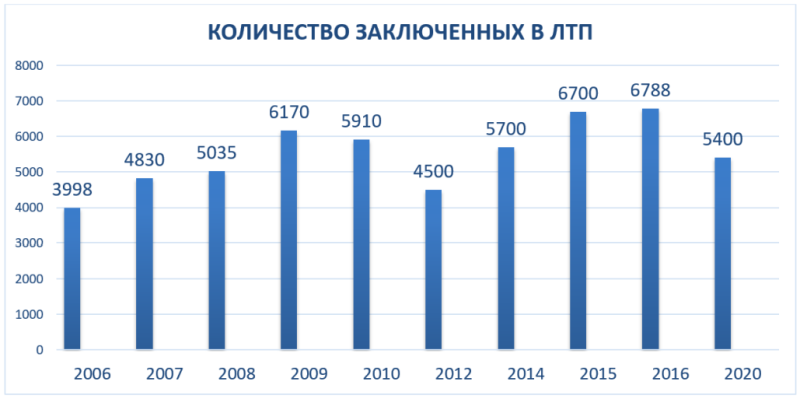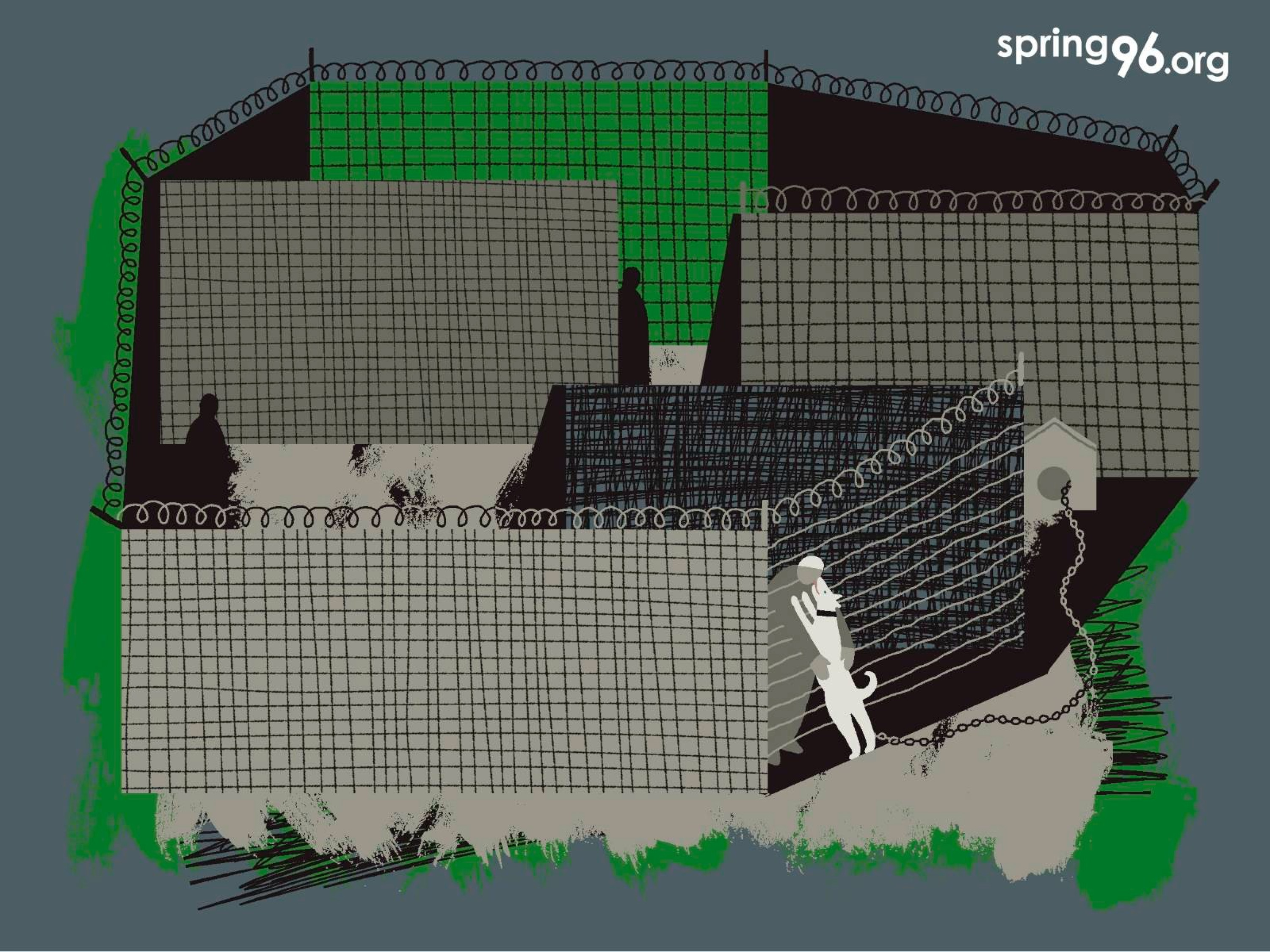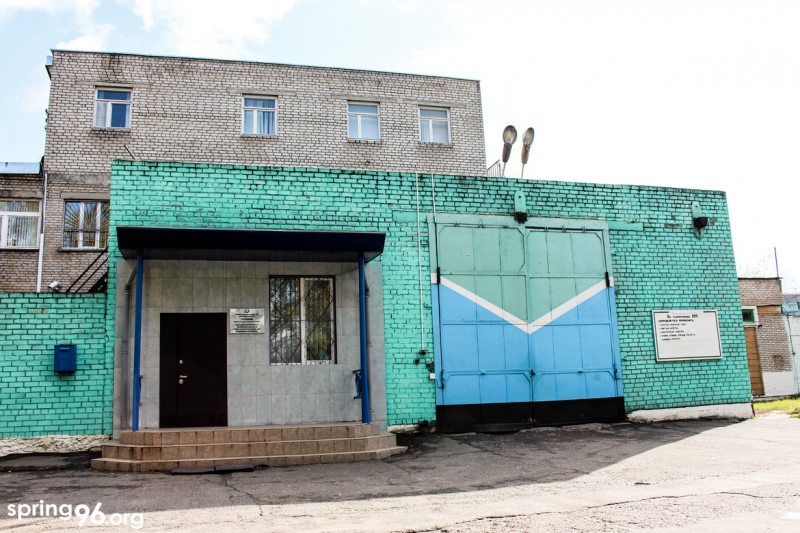Treatment, forced labor, or isolation? The system of labour therapy centres is waiting for big changes
In January 2024, the legislation on compulsory treatment and medical and social rehabilitation of citizens with alcohol and drug addictions will change. There are eight labour therapy centres (LTP) in Belarus, but the Ministry of Internal Affairs plans to expand their number and the quantity of places in them. Thus, the Ivacevičy colony No. 5, where political prisoners are currently being held, will be dissolved, and an LTP will be created instead. Viasna reports how people are sent to labour therapy centres (LTP) every year, what jobs they are made to do, and also tries to figure out whether the state really cares about the health of society in this way or uses LTP as an opportunity to force people to do low-paid jobs.
How many people are sent to an LTP?
At the moment, there are eight labour therapy centres in Belarus, three of them are for women. Essentially, an LTP is a place of imprisonment, where the main method of treatment is forced labor.
According to Aliaksandr Lukashenka's Decree No. 333 from October 19, correctional colony No. 5 In Ivacevičy should be dissolved within three months, and labour therapy centre No. 8 created in its place.
According to statistics, at the end of September 2015, the capacity limit of all LTPs was 6,300 people. However, in 2017 LTP No. 8 was dissolved. This decision led to overcrowding of such institutions. For example, in 2018, almost 1800 people were put in the Svetlahorsk LTP with 1400 places.
On average, the number of persons referred to LTPs in recent years has been about six to seven thousand people. It was smaller in 2020, because the current authorities at that time were not focused on LTPs, as they were busy with crackdowns on protests and detaining dissenters. But in 2022, 7,320 citizens were sent to the so-called labour therapy centres.
Thus, if we take into account the creation of a new LTP in Ivacevičy, which can additionally fit in up to 2500 ”patients", we can predict an increase in the opportunities to send up to 10 thousand people to LTPs. Time will tell whether the authorities will take such a step.
Only about 5% of people who have been "treated" in LTP lose their dependence to some short-term extent. Therefore, we can assume that these facilities exist not to help people with drug or alcohol addiction.

- Analytical studies of lawyers of the human rights center Viasna showing the number of persons in LTPs
Who are sent to LTPs and how?
From January 26, 2024, new provisions of the Law on compulsory treatment and medical and social rehabilitation will come into force. The new version of the legislative act will greatly simplify the procedure for the authorities to forcibly send citizens with alcohol and drug addiction for treatment in special institutions of deprivation of liberty, i. e. LTPs.
Earlier, Viasna wrote how, over time, the path of referral to an LTP was simplified in Belarus. At first, by the law of 1991, it was proposed to send there only people who were addicted to alcohol and narcotic drugs. Subsequently, two other categories of people began to be sent there: persons "owing" to the state who violated labor discipline, as well as unemployed persons leading an "asocial lifestyle" (this is the wording used by legislators). At the same time, they might not have a diagnosis of alcohol dependence.
It is now possible to get into the LTP if there are four administrative reports drawn up against a person under Article 19.3 of the Administrative Code (being drunk in a public place) within a year.
Now, a new draft law, which will take effect in January 2024, proposes to reduce the number of administrative charges: from three to two.
At the same time, now the new project proposes to no longer send persons "owing" to the state and unemployed persons leading an "antisocial lifestyle" to an LTP, but limit that only to people with alcohol and drug addiction.
Also, innovations in the law define a much stricter procedure for isolating people with drug addiction. Now citizens who have addressed or have been admitted to health organizations with poisoning caused by the consumption of narcotic drugs will receive an official warning about referral to an LTP after the first such fact. The second time within a year after such an admission to a medical institution in connection with poisoning caused by drugs will entail a medical examination and sending materials to the court to resolve the case.
Treatment, forced labor, or isolation?
Many studies show that ”treatment" through forced labor has no effect. Comparison of two groups of patients with alcohol or drug addiction who were in LTP and were treated voluntarily in narcological hospitals showed that the frequency and quality of remissions were significantly higher in the first group; the duration of remissions over a year was seven times more common in the first group than in the second.
On the other hand, all these innovations are aimed at increasing the number of people who will be placed in the LTP. The state is interested in having additional "workers" in low-paid sectors of the economy.
One can give a vivid example of how a former political prisoner Vital Zhuk was sent to an LTP. Recently, he shared the peculiarities of life and work there. As the former political prisoner says, the main occupation of the "patients" of LTP No. 5 in Navahrudak is woodworking. In particular, the manufacture of wooden pallets. Zhuk himself received 30 rubles (8.5 euros) for a month of work in the LTP.
"But that was before they calculated utility bills and so on. In the end I got 5–7 rubles. Others could get forty kopecks and one ruble for their work,” Vitaly said.
Vital Zhuk also says that the dirtiest and hardest work in the LTP is the production of charcoal.
"There are huge barrels where coal is burned. People have to climb up there, take out coal from there and clean those barrels. Then people remain black and dirty. After all, the bath is once a week, and ice water from the tap will not wash away such soot and dirt. It's scary to imagine what's inside the lungs of such people,” says Vital.
Siarhei was placed in an LTP in Svetlahorsk in 2021 and worked at a sawmill, but received only two dollars a month. He says that there was a practice when cheap labor was sometimes bought by local businessmen, and then it was possible to earn much more.
What else is offered in an LTP? Work in agriculture, weeding, cleaning and sorting vegetables. For patients of Svetlahorsk LTP there is an opportunity to work in animal husbandry.
At LTPs, there is also production of concrete items (curbs, paving slabs, concrete fences), metal items (barbecues, forged products), and wooden items (gazebos, sandboxes, log cabins, and even dog houses). "Patients" of LTP remove insulation from wires and perform dozens of dirty and low-paid jobs.
It is obvious that the state has only one motive for expanding the LTP system: it is temporary and senseless isolation of people with addictions, creating the illusion of a successful solution to the problems of alcohol and drug dependence in society.
Human rights activists believe that the system of labour therapy centers violates human rights. If you dealt with LTP, contact the human rights center Viasna for help.
Contacts:
e-mail: pierasled@spring96.org (public reception)
telegram: @ViasnaSOS, @SOSViasna (hotline)



















